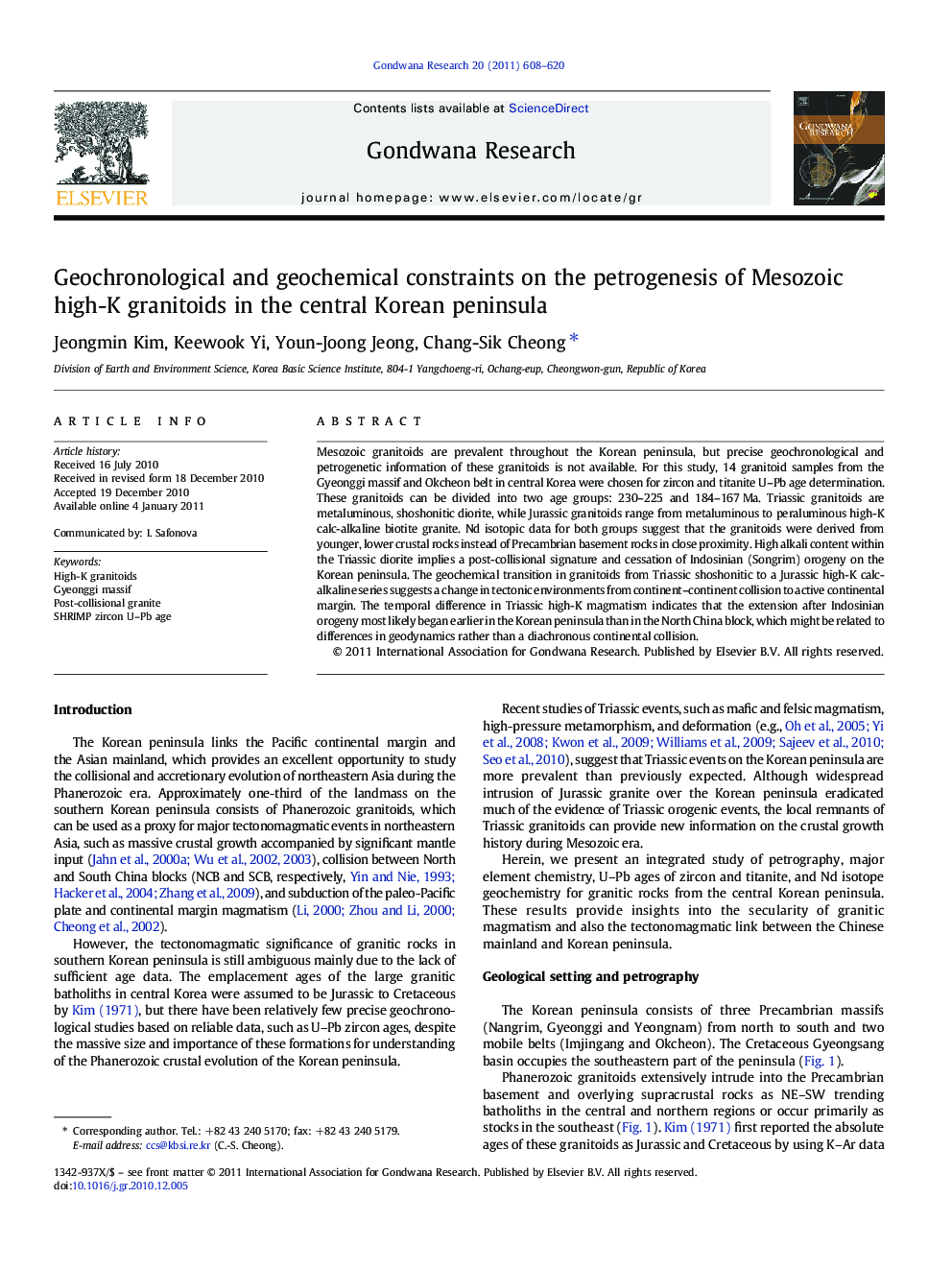| کد مقاله | کد نشریه | سال انتشار | مقاله انگلیسی | نسخه تمام متن |
|---|---|---|---|---|
| 4727717 | 1640147 | 2011 | 13 صفحه PDF | دانلود رایگان |

Mesozoic granitoids are prevalent throughout the Korean peninsula, but precise geochronological and petrogenetic information of these granitoids is not available. For this study, 14 granitoid samples from the Gyeonggi massif and Okcheon belt in central Korea were chosen for zircon and titanite U–Pb age determination. These granitoids can be divided into two age groups: 230–225 and 184–167 Ma. Triassic granitoids are metaluminous, shoshonitic diorite, while Jurassic granitoids range from metaluminous to peraluminous high-K calc-alkaline biotite granite. Nd isotopic data for both groups suggest that the granitoids were derived from younger, lower crustal rocks instead of Precambrian basement rocks in close proximity. High alkali content within the Triassic diorite implies a post-collisional signature and cessation of Indosinian (Songrim) orogeny on the Korean peninsula. The geochemical transition in granitoids from Triassic shoshonitic to a Jurassic high-K calc-alkaline series suggests a change in tectonic environments from continent–continent collision to active continental margin. The temporal difference in Triassic high-K magmatism indicates that the extension after Indosinian orogeny most likely began earlier in the Korean peninsula than in the North China block, which might be related to differences in geodynamics rather than a diachronous continental collision.
Figure optionsDownload as PowerPoint slideResearch Highlights
► Highly alkaline diorite in central Korea was emplaced in the Middle Triassic.
► Jurassic and Triassic granitoids seem to be derived from continental lower crust.
► Post-collisional extensional magmatism began earlier in Korea than in North China.
Journal: Gondwana Research - Volume 20, Issues 2–3, September 2011, Pages 608–620